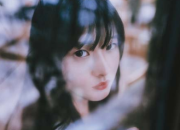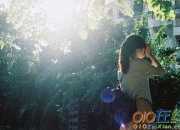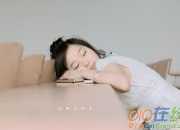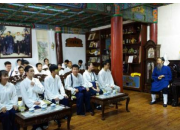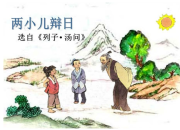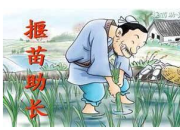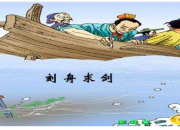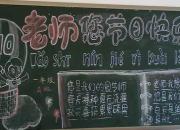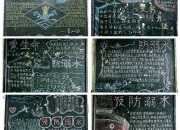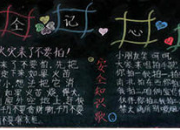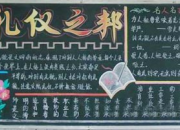北京故宫中英文导游词
时间:2021-08-31北京故宫中英文导游词
北京故宫中英文导游词就是为大家带来的北京故宫中文导游词和北京故宫英文导游词,请看下面:
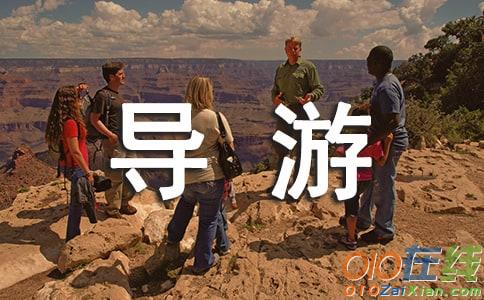
北京故宫中文导游词【1】
女士们、先生们:
今天有幸陪同大家一道参观,我感到很高兴。
这里就是世界闻名的故宫博物馆,一般大家都简称它为故宫,顾名思义,就是昔日的皇家宫殿。
自1911年清朝末代皇帝爱新觉罗.溥仪被迫宣告退位上溯至1420年明朝第三代永乐皇帝朱棣迁都于此,先后有明朝的14位,清朝的10位,共24位皇帝在这座金碧辉煌的宫城里统治中国长达五个世纪之久。
帝王之家,自然规模宏大,气势磅礴,时至今日这里不仅在中国,在世界上也是规模最大,保存最完整的古代皇家宫殿建筑群。
由于这座宫城集中体现了我国古代建筑艺术的优秀传统和独特风格,所以在建筑史上具有十分重要的地位,是建筑艺术的经典之作,1987年已被联合国教科文组织评定为世界文化遗产。
故宫又称紫禁城,究其由来,是由天文学说和民间传说相互交融而形成的。
中国古代天文学家将天上所有的星宿分为三垣、二十八宿、三十一天区。
其中的三垣是指太微垣、紫微垣和天市垣。
紫微垣在三垣的中央,正符合“紫微居中”的说法。
因此,古人认为紫外线微垣是天帝之座,故被称为紫宫。
皇帝是天帝之子、人间至尊,因此他们也要模仿天帝,在自己宫殿的名字上冠其紫字,以表现其位居中央,环视天下的帝王气概。
还有一个说法就是指“紫气东来”。
传说老子出函谷关,关令尹喜见有紫气从东来,知道将有圣人过关。
果然老子骑了青牛前来,喜便请他写下了《道德经》。
后人因此以“紫气东来”表示祥瑞。
帝王之家当然希望出祥瑞天象,那么用“紫”字来命名也就顺理成章了。
“禁”字的意思就比较明显了,那就是皇宫禁地,戒备森严,万民莫近。
此话决无半个虚字,在1924年末代皇帝被逐出宫后这里正式开放以前平民百姓别想踏近半步,大家可以想像紫禁城过去是多么崇高威严,神圣不可侵犯啊!
紫禁城建在北京,是有其历史的,也因为这里是一块风水宝地,说起来话长。
故宫从明永乐四年(1406)开始修建,用了14年的时间才基本建成,到今天已有570多年的历史。
大家看到了,故宫是一级红墙黄瓦的建筑群,为什么这样呢?据道家阴阳五行学说认为,五行包括金,木,水,火,土,其中土占中央方位,因为华夏民族世代生息在黄土高原上,所以对黄色就产生了一种崇仰和依恋的感情,于是从唐朝起,黄色就成了代表皇家的色彩,其他人不得在服饰和建筑上使用。
而红色,则寓意着美满,吉祥和富贵,正由于这些原因,故宫建筑的基本色调便采用了红,黄两种颜色。
故宫占地72万多平方米,有宫殿楼阁9900多间,建筑面积约15万平方米。
四周有高9.9米,号称10米的城墙,墙外一周是52米宽的护城河,俗称筒子河。
城南北长约960米,东西宽约760米,城上四角各有一座结构奇异,和谐美观的角楼,呈八角形,人称九梁十八柱,七十二条脊。
城四周各设一门,南面的正门是午门,北门叫神武门,东门叫东华门,西门叫西华门。
故宫在施工中 共征集了全国著名的工匠23万,民夫100万人。
所用的建筑材料来自全国各地。
比如汉白玉石料来自北京房山县,五色虎皮石来自河北蓟县的盘山,花岗石采自河北曲阳县。
宫殿内墁地的方砖,烧制在苏州,砌墙用砖是山东临清烧的。
宫殿墙壁上所用的红色,原料产自山东宣化(今高青县)的烟筒山。
木料则主要来自湖广,江西,山西等省。
由此也可以看出当时工程之浩大。
我们眼前的建筑叫午门。
午门是紫禁城的正门,俗称五凤楼。
明代,每年正月十五,午门都要悬灯赐食百官。
到了清代这种活动就取消了。
每年农历十月初一,都要在这里举行颁布次年年历仪式,清代乾隆年间因避乾隆帝“弘历”的名字,故将“颁历”改称“颁朔”。
清代,皇帝举行朝会或大祀,以及元旦,冬至,万寿,大婚等重大节日,都要在这里陈设卤簿,仪仗。
此外,国家凡有征战凯旋时,皇帝在午门接受献俘典礼,如果皇帝亲征也从午门出驾。
关于“推出午门斩首”的说法,可能是由于戏剧午台上及野史小说敷衍而来的。
实际上是明代朝廷命官犯罪,有的在午门廷杖,当然严重的可能也有被当场打死的。
(进午门后金水桥前)
现在我们已经到了故宫里面,在正式游览之前,我先介绍一下故宫的布局和参观路线。
故宫占地72万多平方米,在这样大的面积上,集各种建筑手法,建造一组规模如此宏大的建筑群,不但没有纷杂现象,反而给人以结构严谨,色彩辉煌和布局规整的感觉,最主要的手段是建造中突出了一条极为明显的中轴红,这条中轴线和整座北京城有机地结为一体,北从钟楼,南至永定门,总长度约8公里,皇家禁区苑内的部分约占三分之一。
宫内重要建筑都在这条中轴线上,其它建筑分东西对称分布。
整个宫殿的设计和布局都表现了封建君主的“尊严”和对封建等级制度的森严。
故宫分外朝内廷。
现在我们在外朝的最南端正,前面是太和门。
门前有一对青铜狮子,威严,凶悍,成了门前桥头的守卫者,象征着权力与尊严。
皇帝贵为天子,门前的狮子自然最精美,最高大了。
东边立的为雄狮,前爪下有一只幼狮,象征皇权永存,千秋万代。
我们眼前的这条小河,叫金水河,起装饰和防水之用。
河上五座桥象征孔子所提倡的五德:仁、义、礼、智、信。
整条河外观象支弓,中轴线就是箭,这表明皇帝受命于天,代天帝治理国家。
(在太和门前)
故宫建筑分为“外朝”与“内廷”两大部分。
由午门到乾清门之间的部分分为“外朝”,以太和、中和、保和三大殿为中心,东西两侧有文华、武英两组宫殿,左右对称,形成“外朝”雄伟壮观的格局。
三大殿前后排列在同一个庞大的“工”字型汉白玉石殿基上,殿基高8米,分为三层,每层有汉白玉石刻栏杆围绕,三台中有三层石雕“御路”。
太和殿俗称金銮殿,是故宫最高大的一座建筑物,也是国内最高大、最壮丽的古代木结构建筑。
乾清门以内为“内廷”,建筑布局也是左右对称。
中部为乾清宫,交泰殿、坤宁宫,是封建皇帝居住和处理日常政务的地方。
两侧的东、西六宫是嫔妃的住所,东、西一所是皇子的住所。
“内廷”还有为皇家游玩的三处花园——御花园、慈宁花园、乾隆花园。
内金水河沿“内廷”西边蜿蜒绕过英武殿、太和门、文华殿流出宫外,河上有白玉石桥,沿河两岸有曲折多姿的白玉雕栏杆,形似玉带。
故宫建筑绝大部分以黄琉璃瓦为顶,在阳光下金碧辉煌,庄严美观。
故宫中的建筑除了突出中轴线外,还用了各种手法,使宫城中各组建筑独具特色。
比如殿基的处理,殿顶的形式,吻兽和垂脊兽的数目,彩绘图案的规制等等。
这样,不仅使主要建筑更显得高大,壮观,而且还表现了宫中建筑的'等级差别。
民间传说故宫有房9999间半,说天上的皇宫一共有房10000间,地上的皇帝自称“天子”,不敢与其同数,所以就少了半间。
这半间房在哪儿呢?它指的便是文渊阁西头那一小间。
实际上紫禁城有房9000余间,所谓的这半间是根本不存在的。
文渊阁西头一间,面积虽小,仅能容纳一个楼梯,但它仍是一整间。
文渊阁楼下是藏我国第一部《四库全书》的地方,为了照顾布局上的美观,所以把西头一间建造的格外小。
(经过太和门之后)
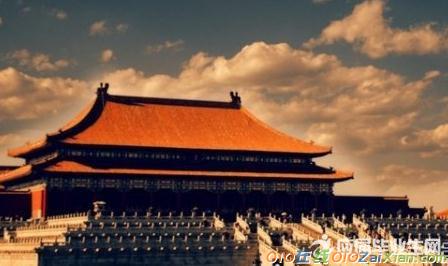
女士们、先生们,前面的大殿叫太和殿,俗称金銮殿,是故宫内最大宫殿。
建筑面积2377平方米,重檐庑殿顶,是殿宇中最高等级,为外朝三大殿中最大的一座。
太和殿建在三层重叠的“工”字型须弥座上,由汉白玉雕成,离地8余米,下层台阶21级,中,上层各9级。
太和殿始建于公元1406年,经历了三次火灾和一次兵燹的毁坏,现在大家看到的是清朝建的。
四个屋檐上各有一排动物,原来是钉子,用来固定瓦片用的,后来换成了神话传说中的动物,据说可以辟邪,而且数量越多,表明建筑越重要。
太和殿上有9个,9是阳之极数,依次为7、5、3、1,平民百姓家是不允许有这种装饰的。
明清两朝曾有24个皇帝在此登基,宣布即位诏书。
元旦、冬至、皇帝生日、册立皇后、颁布法令、政令、派将出征、金殿传胪以及赐安等等,皇帝都要在这里举行仪式,接受文武百官朝贺。
这个广场是太和殿广场,面积达3万平方米。
整个广场无一草一木,空旷宁静,给人以森严肃穆的感觉。
正中为御路,左右地面铺的砖横七竖八,共15层,以防有人挖地道进入皇宫。
周围有一些大缸,是做什么用的呢?在故宫里一共有308个大缸,是用来储水防炎的,缸下可烧炭加温,防止冬天缸水结冰。
为什么要建这么大的广场呢·那是是为了让人们感觉到太和殿的雄伟壮观。
站在下面向前望去:蓝天之下,黄瓦生辉。
层层石台,如同白云,加上香烟缭绕,整个太和殿好像天上仙境一样。
举行大典时,殿内的珐琅仙鹤盘上点上蜡烛,香亭、香炉烧檀香,露台上的铜炉、龟、鹤燃松柏枝,殿前两侧香烟缭绕,全场鸦雀无声。
皇帝登上宝座时,鼓乐齐鸣,文武大臣按吕级跪伏在广场,仰望着云中楼阁山呼万岁,以显示皇帝无上权威与尊严。
清朝末代皇帝溥仪1908年底登基时,年仅3岁,由他父亲摄政王载沣把他抱扶到宝座上。
当大典开始时差,突然鼓乐齐鸣,吓得小皇帝哭闹不止,嚷着要回家去。
载沣急得满头大汗,只好哄着小皇帝说:“别哭,别哭,快完了,快完了!”大臣们认为此话不吉祥,说来也巧,3年后清朝果真就灭亡了,从而结束了我国2000多年的封建统治。
(在太和殿的石台上)
这是铜香炉,,是皇帝举行典礼时焚烧檀香用的。
这里一共有18座,代表清朝18个省。
殿外左右安放四个铜缸,象征”金瓯无缺“,作为贮水防火之用。
台基东西两侧各有一只铜制仙鹤和龟,是长寿的象征。
这个由铅铸造成的器具叫嘉量,嘉量是当时量的标准器,表示皇帝公平处事,谁半斤,谁八两,心中自然有数。
对面还有一个石头做成的器具叫做日晷,是古代的测时仪。
皇帝的意思是:量和时的基准都在自己手里。
太和殿正面有12根圆红柱,东西约63米,南北进深约37米,高35米,殿前丹陛三层五出,殿前后有金扉40个,金锁窗16个,整个大殿雕梁画栋,豪华富丽。
殿内中央设有2米高的平台,上面摆放着雕有9条金龙的楠木宝座。
后面有金漆围屏,前面有御案,左右有对称的宝象、角端、仙鹤、香筒等陈列品。
象驮宝瓶,内装五谷,象征太平景象、五谷丰登。
角端是我国古代神话传说中的一种神兽,可“日行一万八千里”,通晓四方语言,只有明君,它才捧书而至,护驾身旁。
太和殿也叫金銮殿,为什么这么叫呢?因殿内为金砖墁地而得名。
金砖墁地平整如镜,光滑细腻,像是洒了一层水,发着幽暗的光。
那么金砖真的含金吗?其实这是一种用特殊方法烧制的砖,工艺考究,复杂,专为皇宫而制,敲起来有金石之声,所以称作“金砖”。
烧这种砖,每一块相当于一石大米的价钱,可见金砖虽不含金,但也确实贵重。
殿内共有72根大主柱,支撑其全部重量,其中6根雕龙金柱,沥粉贴金,围绕着宝座周围。
在殿中央有一藻井,是从古代“天井”和“天窗”形式演变面来,为中国古代建筑的特色之一。
主要设置在“尊贵”的建筑物上,有“神圣”之意。
在藻井中央部位,有一浮雕蟠龙,口衔一球(球为铜胎中空,外涂水银),此球叫轩辕镜,传说是远古时代轩辕黄帝制造的,悬球与藻井蟠龙联在起,构成游龙戏珠的形式,悬于帝王宝座上方,以示中国历代皇帝都是轩辕的子孙,是黄帝正统继承者。
它使殿堂富丽堂皇,雍容华贵。
镜下正好对着宝座,据说是袁世凯怕大球掉下来把他砸死,故将宝座向后挪到现在的位置。
关于龙椅,这里面有段故事。
1916年(民国五年)袁世凯登基时,把原来的宝座搬走了,换了一把西式高背大椅,上饰他自己设计的帝国徽号。
据说他的腿短,因而将椅座降低。
新中国成立后,为了寻找那把龙椅,根据过去的一张照片,在破家具库找到了一把破椅,经专家鉴定,这椅子就是皇帝宝座,后经修复展出。
(带客人至太和殿东或西侧铜缸处)
古人把陈设在殿堂皇屋宇前的大缸,称为“门海”,门海者,盖“门前大海”之意,古人相信,门前有大海,就不怕闹火灾。
因此,大缸又称为吉祥缸。
它既是陈设品,又是消防器材。
在科学不民达的古代,宫中没有自来水,更没有消防器材。
因此,缸内必须长年储满水以备不虞。
清代时,共有308口大缸,按其质量分类三种,即鎏金铜缸、烧古铜缸和铁缸,其中最珍贵的是鎏金铜缸。
然而这些鎏金铜缸没有逃脱侵略者刺刀刮体的厄运。
侵略者是谁?是英、美、德、法、俄、日、意、奥八国联军。
为了镇压中国人民反帝的义和团运动,1900年的8月13日至8月15日,八国联军攻陷北京,进占紫禁城。
救死扶伤和军官们烧、杀、抢、掠,从宫中及颐和园等处动掠夺的文物在各侵略国使馆区堆积如山,至今仍有大量文物被伦敦、巴黎、纽约博物馆攫为已有。
这一切包括眼前这口缸上的道道刮痕都已成为帝国主义侵略中国的铁证。
是伪统治时期,大缸被拉出宫门,装上日本侵略军的卡车,用去制作子弹,再反过来屠杀我国人民。
(中和殿前)
眼前这个方形建筑是中和殿。
皇帝举行大典前,先到此暂坐休息,会见一些官员。
皇帝去天、地、日、月四坛祭祀时,前一天也要在中和殿里看祭文。
每年二月皇帝到先家坛举行亲耕仪式,前一天要来这里阅视种子、农具、祝文。
这里现在陈列的是乾隆年间的两面三刀顶肩舆,即八抬大轿
城角
故宫的四个城角,每一个角上有一座九梁十八柱七十二条脊的角楼,建造的可好看了。
这四座角搂是怎么盖的呢?北京有这么个传说——
明朝的燕王朱隶在南京做了永乐皇帝以后,因为北京是他做王爷时候的老地方,就想迁都北京,于是就派了亲信大臣到北京盖皇官。
朱隶告诉这个大臣:要在皇宫外墙——紫禁城的四个犄角上,盖四座样子特别美丽的角楼,每座角楼要有九梁十八柱、七十二条脊。
并且说:“你就做这个管工大臣吧,如果修盖的不好是要杀头的!”管工大臣领了皇帝的谕旨后,心里非常发愁,不知如何盖这九梁十八柱、七十二条脊的角楼。
管工大臣到了北京以后,就把八十一家大包工木厂的工头、木匠们都叫来,跟他们说了皇帝的旨意,限期三个月,叫他们一定要按期盖成这四座怪样子的角楼,并且说:“如果盖不成,皇帝自然要杀我的头,可是在没杀我的头之前,我就先把你们的头砍了,所以当心你们的脑袋。”工头和木匠们对这样的工程都没把握,只好常常在一块琢磨法子。
三个月的期限是很短的,一转眼就是一个月了,工头和木匠们还没想出一点头绪、一点办法来,他们做了许多样型,都不合适。
这时候,正赶上六七月的三伏天气,热得人都喘不上气来,加上心里烦闷,工头和木匠们真是坐也不合适,躺也不合适。
有这么一位木匠师傅,实在呆不住了,就上大街闲遛去了。
走着走着,听见老远传来一片蝈蝈的吵叫声,接着、又听见一声吆喝:“买蝈蝈,听叫去,睡不着,解闷儿去!”走近一看,是一个老头儿挑着许多大大小小秫秸编的蝈蝈笼子,在沿街叫卖。
其中有一个细秫秸棍插的蝈蝈笼子,精巧得跟画里的一座楼阁一样,里头装着几只蝈蝈,木匠师傅想:反正是烦心的事,该死的活不了,买个好看的笼子,看着也有趣儿,于是就买下了。
这个木匠提着蝈蝈笼子,回到了工地。
大伙儿一看就吵嚷起来了:“人们都心里怪烦的,你怎么买一笼子蝈蝈来,成心吵人是怎么着?”木匠笑着说:“大家睡不着解个闷儿吧,你们瞧……”他原想说你们瞧这个笼子多么好看呀!可是他还没说出嘴来,就觉得这笼子有点特别。
他急忙摆着手说:“你们先别吵吵嚷嚷的,让我数数再说。
“他把蝈蝈笼子的梁啊、柱啊、脊呀细细地数了一遍又一遍,大伙被他这一数,也吸引得留了神,静静地直着眼睛看着,一点声音也没有。
木匠数完了蝈蝈笼子,蹦起来一拍大腿说:“这不正是九梁十八柱七十二条脊么?”大伙一听都高兴了,这个接过笼子数数,那个也接过笼子数数,都说:“真是九梁十八柱、七十二条脊的楼阁啊,”
大伙儿受这个笼子的启发,琢磨出了紫禁城角楼的样子,烫出纸浆做出样型,最后修成了到现在还存在的角搂。
